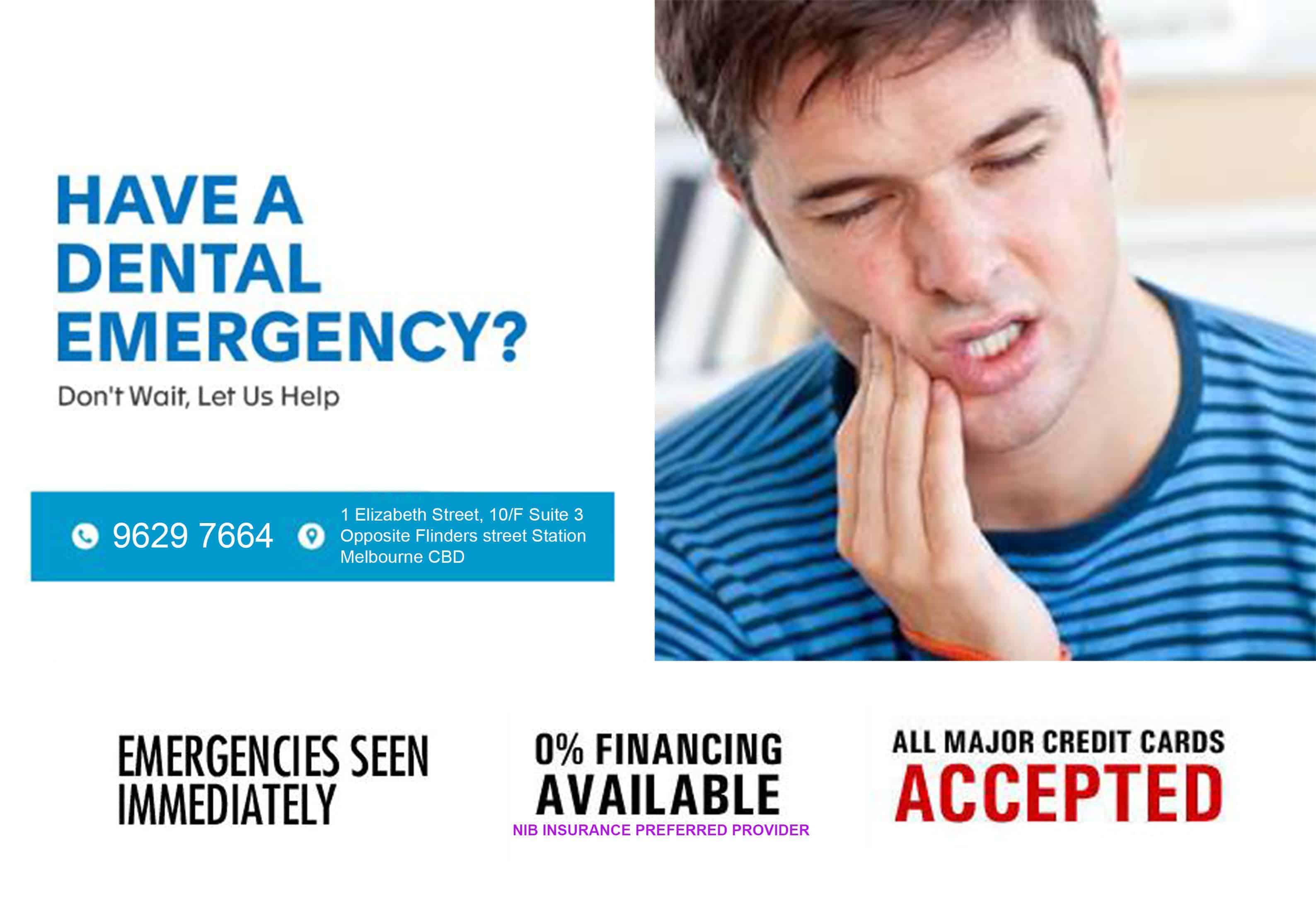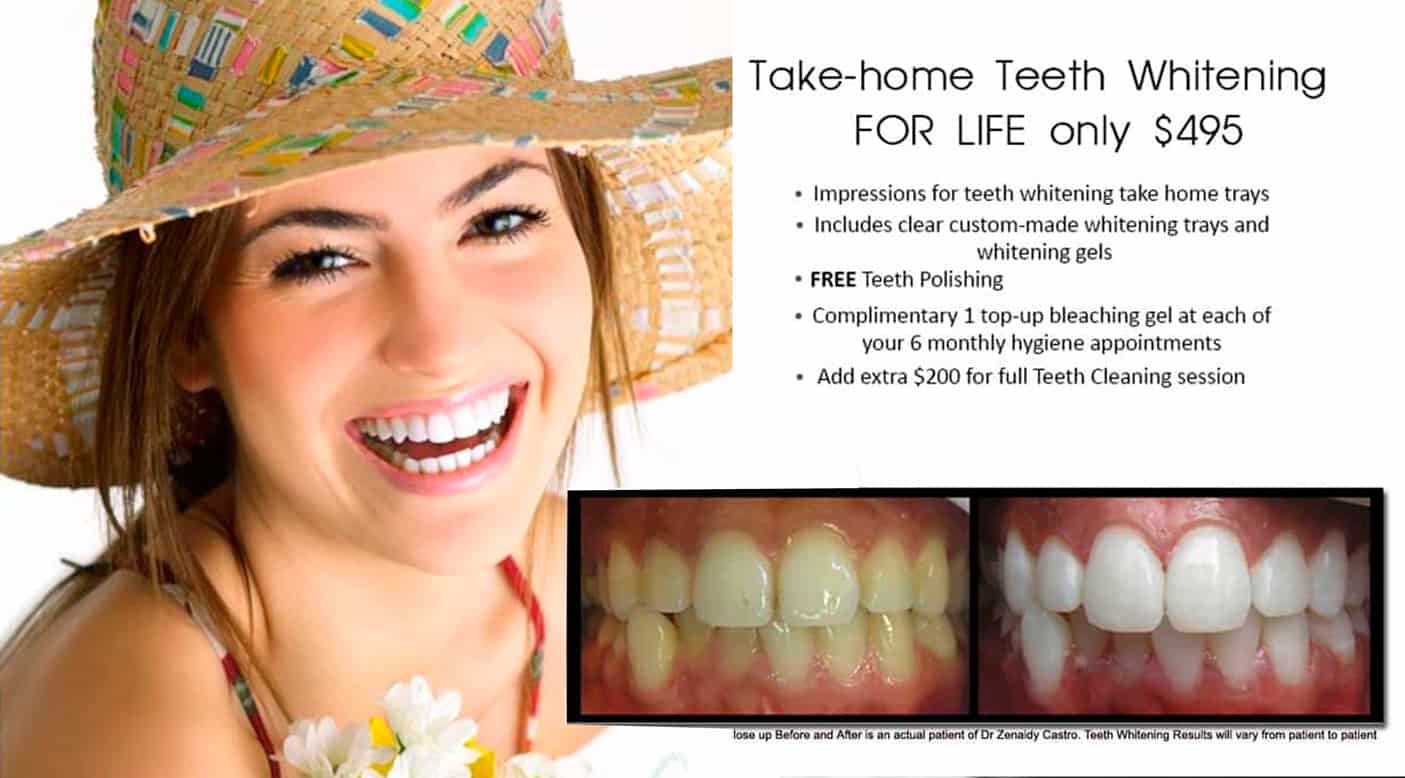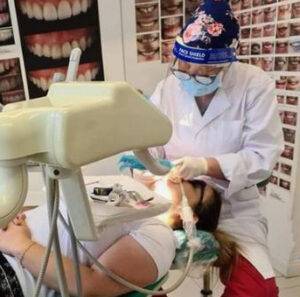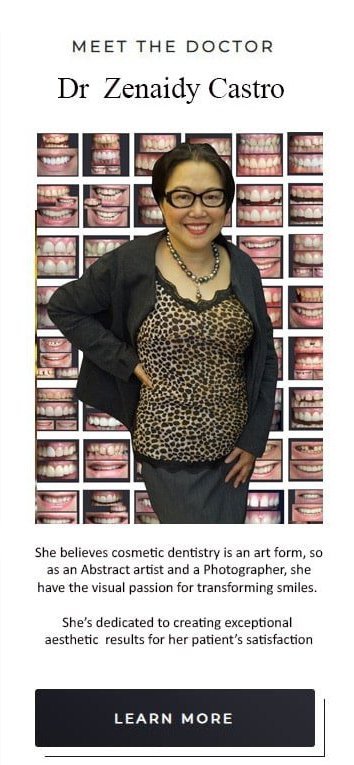


A dead tooth can result from tooth decay or an injury or accident, but you can’t always tell if a tooth is dead just by looking at it. It’s important to know the potential warning signs so that you can see a dental professional as soon as possible to get their diagnosis.
Knowing the signs of a dead tooth — and what to expect if you do have one — can make the process seem less scary and unsure.
Read on to learn everything you should know about this condition and its causes, symptoms and treatment options.
A tooth is considered to be dead or “non-vital” if there is no longer any blood flow to it. This can happen as the result of tooth decay, or as the result of trauma to the tooth.
Tooth decay first results in cavities, and untreated cavities can cause a tooth to die. Untreated cavities will eventually reach the pulp layer of a tooth, which allows bacteria a way in.
Healthy pulp will do its best to fight off any infection that the bacteria brings, but eventually, the pressure inside the pulp will become too high. The blood supply to the tooth will be cut off. That results in the tooth’s death.
Even if you maintain the best dental hygiene, it is still possible for your tooth to die.
A sports injury or hard fall can cause blood vessels to burst and the blood supply to your tooth to be cut off. That kind of physical trauma can cause the nerve or other living tissue in your tooth to die.
You should know what a dead tooth looks like, but it’s also important to realize that you may not see any physical difference even if your tooth is actually dead.
- Pain, which can range from almost unnoticeable to excruciating
- A bad taste or bad smell resulting from an infection
- Swelling
- A change in the tooth’s colour; a dead tooth will often darken
If you’re experiencing any kind of tooth pain or discomfort, you should schedule an appointment with your dentist. An x-ray is often helpful in revealing whether or not a tooth is dead.
Keep in mind that only a dental professional can accurately diagnose a dead tooth, and the sooner you are diagnosed the better it will be for you in the long run.
A dying tooth may be identified during a routine dental appointment that includes X-rays. It may also be identified if you see your dentist because of pain or concerns over discoloration.
You should always see your dentist following any tooth injury, or if you have any signs of a dying tooth. That way your dentist can begin treatment as soon as possible.
It’s important to treat a dying or dead tooth as soon as possible. That’s because left untreated, the bacteria from the dead tooth can spread and lead to the loss of additional teeth. It could also affect your jawbone and gums.
Your dentist may treat a dead or dying tooth with a procedure known as a root canal. Alternatively, they may remove the entire tooth.
If you are diagnosed with a dead tooth that your dentist cannot repair, you should be aware of the treatment options available.
Extracting or removing a tooth that has died is a relatively simple relatively painless form of treatment.
You should expect to receive either local or general anesthesia for the procedure, depending on your preference or the recommendation of your dentist.
In most cases during extraction, the tooth will be gripped tightly and then pulled from the gums. In the event that this is not possible because of how impacted the tooth is, the tooth will be broken up into pieces before being removed.
Following the surgery, you will need to rest. The extraction site may bleed, so be prepared with gauze that you can change as it becomes saturated with blood.
An ice pack may be helpful in minimizing the pain. You should stick to soft food and avoid drinking from a stray for several days after your procedure.
A root canal treatment (RCT) or endodontic treatment is a procedure that dentists use to treat infected, or dead, teeth. A root canal procedure involves removing the dead or dying material, then ‘filling in’ the root canals inside the teeth. Without a root canal treatment, abscesses may form when the tissue around the tooth becomes infected.
A tooth becomes infected when bacteria enters the nerve (pulp) of the tooth. This can occur due to:
- Dental decay, (this can include decay around existing fillings)
- Leaking fillings, (a filling is said to be leaking when the side of the filling doesn’t fit tightly against the tooth)
- Trauma
Usually, you will become aware of an infected tooth due to toothache – and you should visit your dentist for a check-up as soon as possible. If an infection is left untreated, this can lead to a dental abscess; which is a collection of pus in the bone underneath the infected tooth.
Root canal treatment (RCT) should be initiated as soon as possible after a tooth infection is diagnosed. Before your dentist commences RCT, your tooth will need to be x-rayed so that the anatomy of the root can be assessed. At this stage, your dentist may decide that the procedure would be best performed by a specialist endodontist.
Simple, single-rooted tooth RCT can be completed in about an hour, whilst multi-rooted teeth and more complex cases may take several dental visits to complete.
RCT is often performed under local anaesthetic on teeth, which are isolated from saliva and soft tissue by a sheet of rubber placed over the tooth called a ‘rubber dam’. Once the rubber dam is in place, your dentist will drill directly into the tooth to gain access to the root canal system in the centre. He will then look for the entrance to the root canal(s). Once all of the canals have been found, they are cleaned and shaped using various instruments. The length of the canal(s) is determined by x-rays and/or an electronic device.
The canals are then permanently filled to prevent bacteria from re-entering the canal system. A final x-ray will be taken to check that the canals have been filled completely and to the correct length.
Root-filled teeth are more likely to fracture than healthy teeth and you will usually require a crown to protect and reconstruct your tooth after the root canal treatment has been done.
After RCT, you may experience a little discomfort for a few days, but this should then disappear, leaving a tooth which feels normal, just like its neighbours.
If you have an infected tooth that is causing you a great deal of pain, pulling it out may seem like a no-brainer. But wait! Pulling an infected tooth is not always the best choice. There are many benefits to maintaining your natural teeth if possible. In the end, it is your personal choice, but it is important to have all the facts before making such an important decision.
What are the benefits of saving your real teeth? Endodontists, dental specialists who focus on saving teeth, have some answers to this question.
- Natural Teeth Are Stronger. Your natural teeth will function much better than artificial ones and are much easier to keep clean. It is true that artificial teeth are better now than they have ever been before, but they still can’t match your natural teeth in terms of function.
- Avoid Shifting Teeth. When you have a tooth pulled, the gap it leaves behind makes it possible for your other teeth to shift. It may not happen right away but over time, this shift can cause issues with your bite alignment. This can be the beginning of a domino effect that leads to pain, nutrition issues, and an overall decrease in your quality of life.
- Maintain Your Appearance. Having a tooth pulled also pulls the roots that support your jaw. This causes a gap in the bone that makes many people look much older than they really are.
- Avoid Loss of Confidence. If your pulled tooth leaves a gap in your smile, it will most likely have a negative impact on your self-esteem. Dentists often see patients who refuse to smile because they are embarrassed by their teeth.
- Decreased Pain. Following a tooth extraction, most patients are in pain for days, especially if they suffer from dry socket. When the tooth is preserved with a root canal, the infection is eliminated, there is no risk of dry socket and the pain is relieved much more quickly.
- Fewer Dentist Visits. Once a tooth has been extracted, you may need to follow up with implants, a bridge, a crown or another dental device. This means more visits to the dentist, more expenses and, often, more pain.
- Fewer Expenses. Pulling the tooth may seem like the cheaper option but it often costs more time and money. There are also physical and emotional costs associated with choosing not to replace your tooth.
There are many reasons that you should try to preserve your natural teeth for as long as possible. However, infection and tooth decay can make this difficult and you may have to choose between preserving your tooth or pulling it. If you want to save the tooth, you will normally have a root canal, in which the inside of the tooth is cleaned and disinfected to get rid of the infected interior. The tooth is then filled with a substance that strengthens and protects it, allowing it to function like all your other teeth. In addition to saving your tooth, you have a faster recovery and faster relief from the pain.
Saving your tooth is always preferred but there are circumstances in which you have no choice but to extract it. If the tooth is cracked, especially below the gum line or in more than one place, there may be no way to save it. If it is too weak to be fixed, it may be best to pull it out.
If your dentist tells you that you need a tooth extracted, ask whether a root canal may be an option. Having this conversation can help you answer this important question before making any decisions
If your tooth is causing lot of pain, there are something’s you can do at home while you wait for treatment:
- Avoid hot beverages. They can increase inflammation, which can make your pain worse.
- Take an over-the-counter anti-inflammatory medication, like ibuprofen (Advil, Motrin).
- Avoid eating hard things. The force of biting down on them may aggravate the damaged nerves.
It’s important to see your dentist right away. Home treatment should not be used in place of professional medical treatment. Instead, you should use these methods while you wait for your appointment
Teeth that are referred to as “dead” are called so because there is no more blood flowing to it, hence it cannot sustain life. You’ve got various terms for dead teeth, including “non-vital tooth,” or “necrotic pulp.”
Once a tooth dies, it’s only a matter of time before it falls out of its own accord. It is not a wise decision to allow this to happen, however, as it can harm your other teeth and jaw and can actually be pretty dangerous. Depending on the type and extent of the damage, it may be days, weeks, months, and sometimes even years before the tooth falls out. This doesn’t mean you should wait around for it to happen, and it’s strongly recommended you go to your dentist and get the tooth dealt with as soon as possible after noticing the death of your tooth.
It’s generally not possible to tell if a tooth is dead by simply looking at it, and it’s always better to get a dentist to give you a proper diagnosis instead trying to guess or figure it out yourself. Yet another reason to go for regular dentist check-ups.
Two sure signs that you should go and get your teeth looked at by a dental professional include discomfort or pain, and if your teeth are changing in colour or getting darker.
Pain will often mean that the pulp is infected or the tooth nerve is dying. Many people think that once the nerve is dead you won’t feel anything. This is not the case, as the pain doesn’t come from inside the tooth, but from nerve endings on the tooth’s exterior. These are referred to as the periodontal membrane.
After experiencing and being treated for a dead tooth once, you will want to do everything in your power to prevent it from happening again.
While accidents and injuries to your tooth are impossible to predict and difficult to prevent, there are ways to reduce your chances of having a tooth die.
From an oral hygiene perspective, you should brush your teeth at least twice a day using a fluoride toothpaste. You should floss at least once a day.
And, of course, see your dentist for teeth cleaning and checkups on a regular basis.
When playing sports or participating in an intense activity, wearing a gum shield or mouth guard can go a long way in helping you avoid tooth trauma.
There’s no guaranteed method that will allow you to avoid ever experiencing having a tooth die, but preventative measures can go a long way in reducing your risk.
One of the best ways to prevent a minor toothache from becoming an even bigger problem is to regularly schedule dentists appointments.
Our dentists can provide you with the services necessary to maintain a healthy mouth. They are there to give you the best treatment available when issues do arise.
We believe in educating our patients on good oral hygiene and prevention habits, so they can effectively protect their mouth health in between visits with us.

Keep a record of the signs and symptoms you’re experiencing because we’ll need to learn more about them from you.
Having a clear memory of your pain history will help us determine what your problem is, what the best course of action is, and how long your appointment will be when you come to see us.
Having a clear memory of your pain history will help us determine what your problem is, what the best course of action is, and how long your appointment will be when you come to see us.


Disclaimer:
The information on this website is for information purposes only. Is not a substitute for a proper professional care and advice. Each patient’s outcomes, risks, potential complications, and recovery differ. Any dental procedure, minor or major, carries risks, some minor and some serious. Before and after images seen on our Social Media and website pages are our actual patient and have been published/posted with our patients’ permission. All of our patients photos are subject to Copyrights protection. We are strong believers in responsible aesthetics. Every cosmetic, medical, or dental procedure comes with its own set of risks and benefits. Cosmetic Dentistry results will vary from patient to patient. Call our office and book for an actual in-office consultation for us to assess if you are a good candidate for a particular treatment. All of our Specials and packages posted on this site are subject to terms, conditions and availability. The exact fee for a particular cosmetic procedure will be determined after a preliminary assessment distinguishing your unique personal needs and the type of work needed. The prices mentioned on any of our website as well as any mentioned payment plan by a third party source, are just a guide and is subject to change. Call the third party financing providers or visit their website for more info. Please call the office on 9629-7664 for further queries or clarification.


CONNECT WITH DR ZENAIDY CASTRO ON SOCIAL MEDIA
x | Instagram | Youtube | facebook | Linkedin | Tumblr | Flickr | BlueSky | Dentistry Instagram | YouTube | Dentistry Facebook | Australian Photographer & Cosmetic Dentist | Infinite Abundance | Gab | Minds | OK | Gettr | Deviant art | Independent Academia | PearlTrees | 500px | Gram.Social | Tiktok |
EXPLORE DR CASTRO’S ABSTRACT ART AND FINE ART PHOTOGRAPHY COLLECTIONS
SHOP | Corporate Art For Business Offices- Office Wall Art for sale | Hospitality Art | Healthcare and Hospital Art | Black and White Photography Curated Collection | Black and White Photography for sale Limited Edition | Best of Black and White Photos for Sale | Black and White Landscape and Nature Fine Art Photos | Landscape and Nature Photography Curated Collection | Country and Rural Landscape photos for sale | Waterscapes Photography | Immortalize your Pets Through art | Sphynx Cats in Art | Sphynx Cats - Hairless cats Photos for sale | Globe Trotting Dentist and Photographer | Travel Blog | Australian Abstract Artist and Photographer | Australian Photographer | Abstract Art | Sphynx cats in Youtube | IMMORTALIZE YOUR PET THROUGH ART | Panoramic Landscapes | Black and White Mountain | Black and White Trees, Woodland & Rainforest | Black and White Desert & Outback | Landscape and Nature Photography | Waterscapes | Minimalism | Country & Rural Scene Photography |
ARTS AND PHOTOGRAPHY RESOURCES
Unique Online Art Gallery Melbourne Australia | Black and White Photography Facts and History | The Art Buying Timeless Guide : How to Invest in Art | A Beginner’s Guide to Investing in Art Like A Pro | Investing in Emerging Artists : A Comprehensive Guide | Is photography considered an art? | List of Must-See Art Galleries and Museums Around the World | Coping with Pet loss & Pet Grief as a Transformational Journey | How to Choose Art for you Office or Business | Attracting Goodluck with fengshui and Vastu art principles | Colour Therapy and Choosing art & photography prints for Health care clinics and hospitals | Exotic Sphynx Cats in Fine Art | Sphynx Cats in Art | Sphynx Cats Photos for Sale | Travel Blog | BUSINESS AND TRADE DISCOUNT | ART TRADE PROGRAM | HOSPITALITY ART | Buy Black and White Photo Prints | Buy Fine Art Black and White Photography | Blog | Blogger | Medium | Behance | Weebly | Museum | Master of Monochrome - Black and White Photography |
READ ABOUT COSMETIC DENTISTRY IN MELBOURNE
Dr Zenaidy Castro | Cosmetic Dentist in Melbourne | Vogue Smiles Melbourne | Porcelain Veneers In Melbourne | Porcelain Veneer Special Package Offer Melbourne Australia | Smile Makeover Procedures | Cosmetic Dentistry Procedures Melbourne | Cosmetic Dentist in Melbourne Australia | Dental Bonding | Anti-aging Smile Rejuvenation | Dental Facelift | Teeth Whitening | Invisalign | Dental Crowns | Dental Bridges | Full Mouth Dental Reconstruction | Implant Alternatives | Emergency Dental Care Noble park North | General and Family Dental Clinic Noble Park North | Cosmetic Dentistry Before and After | Non-surgical facelift options without Invasive Surgery | Most Affordable Way to Improve Your Smile | Comprehensive Guide to the Cost of Dental Veneers | Cosmetic Dental Procedures for Smile Improvement | Dental Veneer Specials Melbourne CBD & Noble Park | Composite Veneers vs Porcelain Veneers | Alternative to Dental Implant or All-On-4 Implant in Replacing Missing Teeth | Dental Financing | Cosmetic Dentist near Glen Waverley, Mulgrave, Wheelers Hill area, Springvale | WOMOW | YOUTUBE | YELP | HOTFROG | FLICKR | TIKTOK | LINKEDIN | PINTEREST | TUBMLR | X | BEHANCE | DISQUS | HUBPAGES | WEEBLY | MEDIUM |
Serving General, Family, Cosmetic and smile makeover treatment including Porcelain Veneers, Dental Bonding, Full Mouth Reconstruction, Dental Crown and Bridges, Teeth Whitening and more in MELBOURNE CBD, NOBLE PARK NORTH and on the Surrounding Suburbs of Glen Waverley, Dandenong, Dandenong North, Noble Park, Springvale, Springvale south, Rowville, Wheelers Hill, Keysborough, Bangholme, Dandenong South, Lyndhurst, Boronia, Doveton, Clayton, Mulgrave, Mount Waverley







